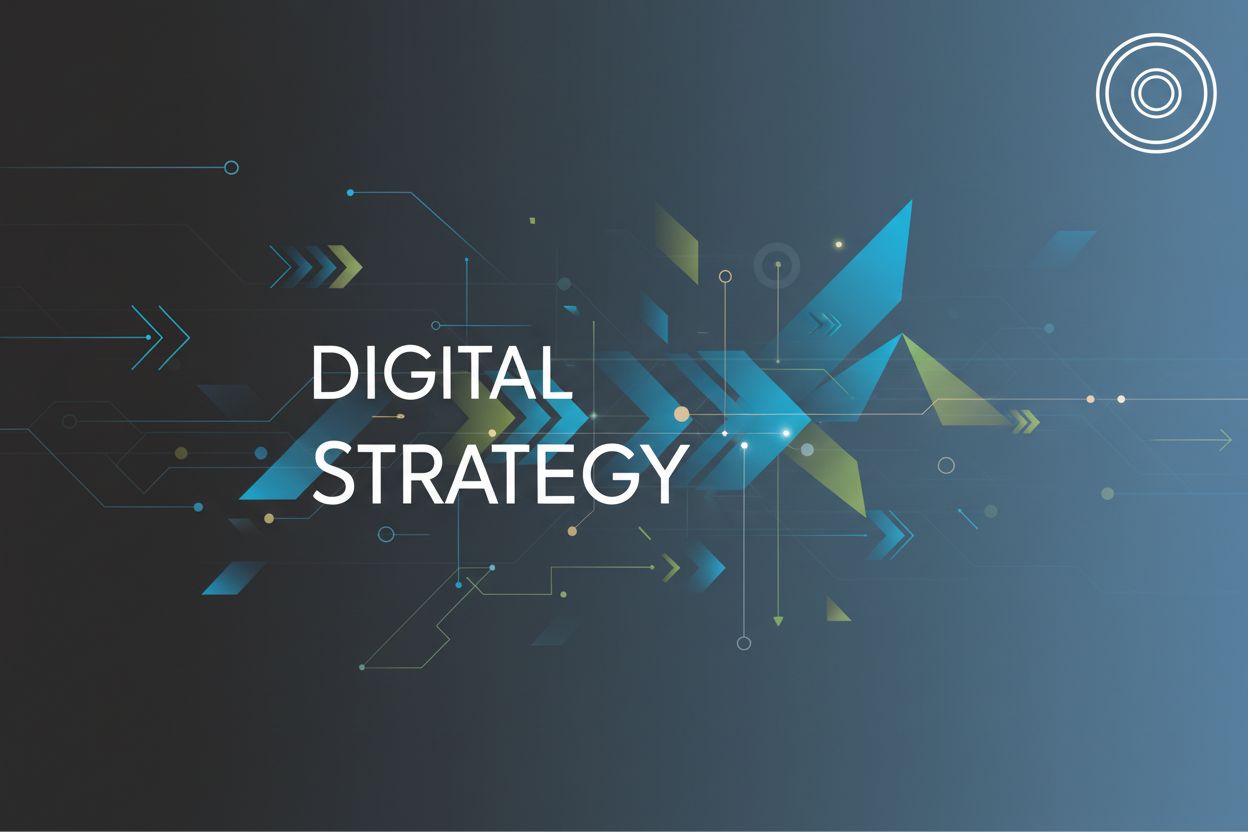Understanding the Digital Marketing Strategy Framework
TL;DR
What is a Digital Marketing Strategy Framework?
Okay, so you wanna know what a digital marketing strategy framework is, huh? Well, let me tell ya, it's not just some fancy buzzword that consultants throw around. Think of it kinda like a blueprint for building a house--except instead of bricks and mortar, you're using social media, email campaigns, and all that jazz!
- A digital marketing strategy framework is basically a structured way of planning, executing, and then actually looking at what you did in your digital marketing efforts.
- It's like a roadmap. It shows you how to get to your business goals using online channels. Without it, you're just kinda wandering around the internet, hoping for the best, you know?
- These frameworks help make sure everything is consistent. Like, all your digital marketing stuff needs to be singing from the same hymn sheet, otherwise, it just gets confusing. Frameworks achieve this by aligning your messaging, target audience, and channel selection, ensuring a cohesive brand experience.
For brand managers, a framework is key, I think.
- It gives you a clear view of how digital marketing is helping the overall brand. Like, how are those tweets actually helping us sell more stuff?
- It helps you spend money wisely and see if your campaigns are actually working. Are you getting your money's worth?
- Using a framework lets you make decisions based on data, not just gut feeling. That's how you get more successful outcomes.
According to Wrike, a digital marketing strategy framework brings structure to the digital marketing process.
Next up, we'll dive into...
Popular Digital Marketing Strategy Frameworks
Okay, so you're trying to figure out which of these digital marketing strategy frameworks is right for you? Honestly, it can feel like you're trying to pick the best flavor at an ice cream shop with, like, a million options! Let's break down a few popular ones, so it's easier to see what might work for your business.
First up, there's the RACE framework. It's all about Reach, Act, Convert, and Engage. Simple, right? It's a comprehensive, cyclical model that covers the entire customer journey.
- Reach is getting your name out there. Think about building brand awareness through social media or driving traffic to your website. For instance, a local bakery might use targeted Facebook ads to reach people within a 5-mile radius who have expressed interest in baking or desserts.
- Act is about getting visitors to do something. Maybe it's persuading them to spend time on your website, or getting them to subscribe to your newsletter. A healthcare provider, for example, might offer a free downloadable guide on "5 Ways to Improve Your Sleep" in exchange for an email address.
- Convert is where you turn those interested folks into paying customers. This stage focuses on leads, sales, and revenue growth. A retailer might use a limited-time discount code for first-time buyers to encourage that initial purchase.
- Engage is about building those lasting relationships with your customers. You want them to stick around, right? A financial services company could host exclusive webinars for existing clients, offering insights and building loyalty.
Then we have the Marketing Funnel. It's a classic for a reason, breaking down the customer journey into:
- Awareness: Making people know you exist.
- Interest: Piquing their curiosity, getting them to want to learn more.
- Consideration: Showing them why you're the best choice.
- Action: Getting them to buy, sign up, or whatever your goal is.
Unlike RACE, the Marketing Funnel is more linear and focuses on the customer's progression towards a single conversion. Think about it like this: A software company might create blog posts and infographics to build awareness. Then, they offer a free trial to generate interest. During the consideration phase, they provide case studies and comparisons. Finally, they offer a special discount to drive action.
And what about the Flywheel Model? It's all about keeping the momentum going with:
- Attract: Pulling people in with great content and experiences.
- Engage: Building relationships and offering personalized attention.
- Delight: Exceeding expectations so customers become advocates.
The Flywheel Model emphasizes creating a positive customer experience that fuels growth through advocacy. A subscription box service, for instance, might use engaging social media content to attract new subscribers. They then offer personalized recommendations to engage them. Finally, they include surprise gifts in their boxes to delight them, turning them into loyal fans who spread the word.
Don't forget the good old SWOT Analysis: Strengths, Weaknesses, Opportunities, and Threats. It's all about knowing yourself, inside and out.
- Strengths: What are you good at?
- Weaknesses: Where do you need to improve?
- Opportunities: What's out there that you can take advantage of?
- Threats: What could hurt you?
A small retail business might identify its strengths as excellent customer service and a loyal local following. Weaknesses might include limited online presence and inventory. Opportunities could be expanding into e-commerce and partnering with local influencers. Threats could be larger competitors and economic downturns.
Choosing the right framework really depends on what you're trying to achieve, and what your business looks like. Consider these frameworks as tools in your marketing toolbox. Some are better for certain jobs than others, but at the end of the day, you have to pick the ones that fit your needs!
Key Factors in Building a Digital Marketing Strategy Framework
Alright, so you're trying to wrangle all your digital marketing efforts into something that actually, you know, works? It's like herding cats sometimes, isn't it? But trust me; getting these key factors down will make a huge difference.
First off, you gotta nail those business goals. What are you actually trying to do? Don't just say "more sales." Be specific. Specific goals are essential for setting measurable KPIs and for guiding the selection of appropriate strategies and tactics.
- Like, if you're a small bakery, maybe it's "increase online cake orders by 20% in the next quarter". Or if you're, like, a healthcare provider, it could be "get 50 new patients signed up for our telehealth service each month". See? Actual numbers, actual timelines.
Then, there's your target audience. This ain't rocket science; it's just common sense.
- Who's buying your stuff? What do they care about? Where do they hang out online? If you're selling, say, organic baby food, you're probably looking at young, health-conscious parents on Instagram and parenting blogs. But if you're pushing enterprise software, you're gonna be hunting on LinkedIn and industry forums.
And don't forget to peek over at your competitors. What are they up to? What's working for them? What are they totally botching? You don't wanna copy them, but it's good to know what kinda battlefield you're walking into.
Finally, you need a unique value proposition (UVP). What makes you special? Why should someone pick you over everyone else?
- Like, maybe you offer the fastest delivery in town. Or maybe your product is the most eco-friendly. Whatever it is, shout it from the rooftops! Make sure it's clear in all your ads and website copy.
Getting this stuff sorted is half the battle, honestly. Once you know where you're going, who you're talking to, and what makes you special, the rest kinda falls into place. Next, we'll look at...
Implementing a Digital Marketing Strategy Framework
Alright, so you're staring at this digital marketing strategy framework thingy, and you're probably wondering, "How do I even use this?" It's like having a fancy espresso machine but not knowing how to make a latte, right?
First things first: conduct a situational analysis. This is where you figure out where you're at. A SWOT analysis is the classic way to do this, helping you figure out your Strengths, Weaknesses, Opportunities, and Threats.
- For example, maybe your strength is killer content, but your weakness is a crummy website. Knowing this, you can actually allocate resources effectively; like, spend less time making content and more time fixing the site.
Next, set SMART objectives: Specific, Measurable, Achievable, Relevant, and Time-bound.
As Springboard points out, setting SMART goals ensures your goals are attainable and will provide you with data points to analyze your results.
Once you know where you stand and where you wanna go, then you pick a framework.
Time to put your plan into action across different channels like social media, email, or even a blog. According to Silverback Strategies, this is where you implement your strategy and monitor progress. For instance, 'implementing your strategy' might look like launching a series of social media ads targeting your defined audience, or publishing a new blog post optimized for relevant keywords.
Remember to continuously monitor your KPIs so you can track your progress. Finally, don't be afraid to tweak things as you go. Digital marketing is all about experimenting and seeing what sticks, you know?
Measuring Success and Optimizing Your Framework
Alright, so you've built this awesome digital marketing framework. Now, how do you know if it's, you know, actually working? It's like baking a cake – looks pretty, but does it taste good?
To really see if your framework is doing its job, you gotta keep an eye on the right metrics and kpis.
- Website traffic, bounce rate, time on site is a good place to start. Are people even seeing your stuff? Are they sticking around, or bouncing off like a trampoline? For instance, a high bounce rate on a landing page might mean your messaging isn't jiving with what they expected. Other common reasons for a high bounce rate include slow loading times, poor mobile responsiveness, or a confusing user experience.
- Conversion rates, lead generation, sales revenue are important to monitor as well. Are you turning those eyeballs into actual customers? If you're running an e-commerce site and your conversion rate's in the toilet – well, Houston, we have a problem. You may need to optimize the checkout process, for example.
- Social media engagement, reach, and follower growth should also be considered. A lot of businesses monitor how many likes, shares, and comments they are getting. If your follower count is stagnant, maybe it's time to shake up your content strategy.
- Email open rates, click-through rates, and conversion rates are useful if you are using email marketing. Are people opening your emails, clicking on your links, and buying stuff? Low open rates might suggest your subject lines need a significant improvement – or that your list is getting stale. To improve subject lines, try using emojis, asking questions, creating a sense of urgency, or personalizing them based on subscriber data.
- Customer acquisition cost (cac) and customer lifetime value (cltv) are also useful. How much are you spending to get a customer, and how much are they worth to you over time? If your cac is higher than your cltv, you, my friend, are losing money.
But look, it's not enough to just track this stuff. You gotta do something with it, you know?
- Regularly review your metrics and kpis to identify areas for improvement. Are there any bottlenecks in your marketing funnel? Are some channels performing better than others? If you're seeing a ton of traffic from Instagram but zero sales, maybe you're targeting the wrong audience or your product page needs some love.
- A/B test different tactics and strategies to optimize performance. Try different ad copy, landing page designs, or email subject lines. See what resonates with your audience, and ditch what doesn't. For instance, you could A/B test two different calls-to-action on your website to see which one drives more sign-ups. It's like a science experiment, but with money on the line.
- Stay up-to-date with the latest trends and best practices in digital marketing. What worked last year might not work this year. The digital landscape is constantly evolving, so you gotta keep learning and experimenting.
- Be prepared to adapt your framework as needed to stay ahead of the competition. Don't get too attached to your framework. If something isn't working, be willing to change it. As Wrike points out, digital marketing metrics are important to consider.
Ultimately, measuring success and optimizing your framework is an ongoing process. You can't just set it and forget it. Well, you can, but you probably won't get very far. Keep testing, keep learning, and keep adapting, and you'll be well on your way to digital marketing success.




